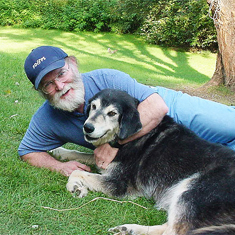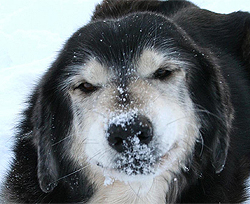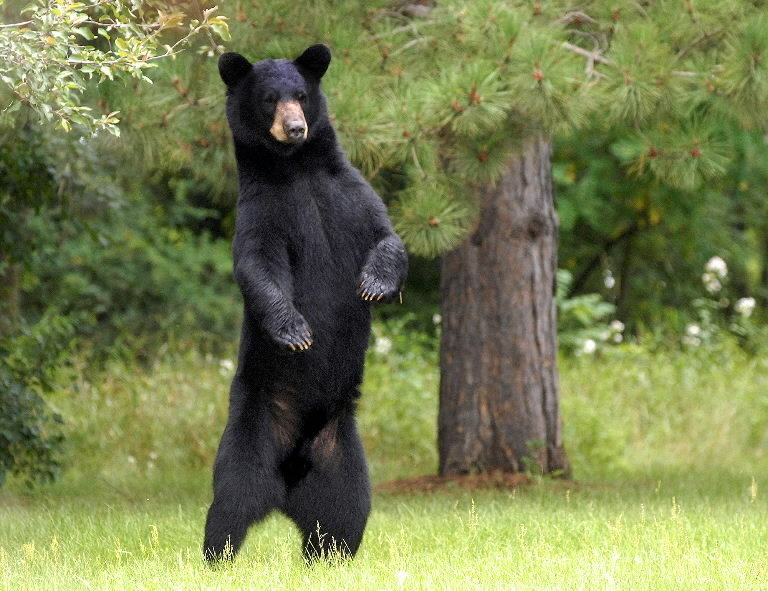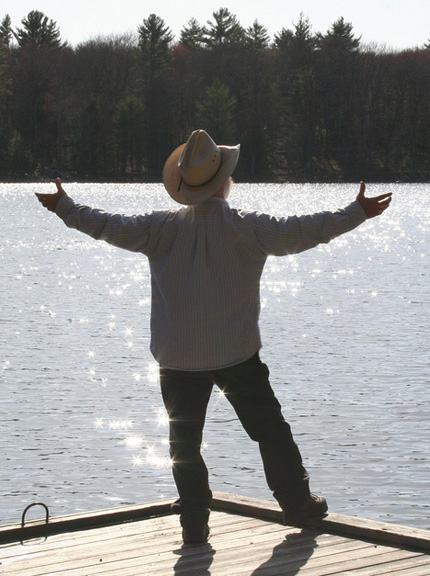 I’m conducting an argument on Facebook with a “lover” of cats, following the announcement of her soon-to-be-acquired hairless Sphynx cat. Argument follows:
I’m conducting an argument on Facebook with a “lover” of cats, following the announcement of her soon-to-be-acquired hairless Sphynx cat. Argument follows:
…
SF: This is the Sphynx kitten I will be getting in a few weeks. [ Photo attached, not the one shown here ] Right now he will be two weeks on the 28th. If you have any idea’s for names let me know. Right now Mr. Wrinkles is what we have so far lol
Hank Fox: If this is one of those hairless cats … argh. I would never, ever own one, or support the breeding of them.
If you really LIKE cats, you have to have SOME feeling for their right to bodily integrity, to their health and comfort, apart from the freakish and cruel tricks breeders play on them.
Doing this to cats is a moral crime.
AA: I’m sure the SF has done his or her research on keeping a breed like this happy and healthy. Sphynx cats generally are a quite healthy and long-lived breed. I agree breeding certain types of cats or dogs is immoral (Scottish Fold cats can be unhealthy and many breeds of dogs are purposely bred to not be able to breathe properly, or the breeders don’t do the responsible thing by doing genetic health tests to clear certain breeds of inherited genetic illnesses. I’d be more worried about those types of breeds than simply a hairless breed.)
Plus, no hairballs.
SF: Hank Fox, I have never heard such crap. I have researched the breeder and they are wonderful with their cats. I have also spoke with several people that also have a Sphynx and they said they are a great breed very affectionate.
HF: Apparently none of you have any idea what I’m talking about, and I guess I’m not going to get it through to you in one conversation. But breeders who deliberately create genetic monsters for the amusement of fools and simpletons are not “wonderful” with their cats. They barely know cats exist; instead they have these amusing little toys that also happen to be hapless living creatures subject to human whims.
If the utterly defenseless cats could choose, you can be damned sure they’d choose to have good healthy fur. But screw them, right? They’re just stupid cats. Fortunately we “love” them enough to make these choices on their behalf.
AA: Defenseless, how, exactly? I’m presuming this will be an indoor house cat?
HF: Defenseless how? Pets are absolutely unable to defend themselves against US. Against what breeders do to them. Against what people think is funny, or cute, or convenient, no matter what it does to the animal itself.
If you love animals at all, you have to recognize that they have SOME rights, SOME life apart from us. Otherwise they’re just furniture, or toys. Witness how many millions of them we casually throw away each year, because they’re no longer convenient, or fail to match the new furniture, or can’t fight anymore.
I think there are limits on how much genetic and surgical meddling we should allow ourselves to do to them, and still call ourselves animal lovers. Depriving a cat of its claws is horrible, in my opinion. Depriving it of its fur … something so basic it goes without saying in the definition of catness …that’s even worse.
AA: I don’t agree with declawing.
HF: AA, with a little bit of thought, you might also be against de-furring. Fur isn’t some jettisonable convenience for cats. It’s how they regulate their temperature, protect their skin against infection and injury, interface comfortably with various surfaces, guard themselves from injury by other cats, allow themselves to be readily RECOGNIZED as cats by other cats, so much more.
I adopted a feral cat a few years ago. She lived outside for at least two years, in the snow in winter, and she did it because she had a comfortable thick coat of fur. She belonged to somebody once — we suspect she was some elderly lady’s best friend and the lady died, after which she was left outside by uncaring neighbors or relatives and went looking for food. She ended up in our yard, which was well supplied with rodents from our bird feeders, and eventually we started feeding her too. And then, once she got used to us, invited her in.
She survived out there because she was still a cat. Still able to survive without humans. Still had her fur and her claws. A declawed cat would have been less able to catch rodents, a defurred cat would have died in frozen agony that first winter.
HF: SF, I don’t necessarily want to hurt your feelings here. But … there are some things you may not have thought about. Not because you’re a bad person, but because NOBODY thinks about these things. Nobody talks about them. People filling the world up with pug dogs who can’t breathe and German shepherds with crippling congenital hip defects are absolutely convinced they love animals, and have no idea what ongoing agony they’re continuing to propagate.
But the thing is, animals have feelings. They have their own lives, their own existence, somewhat apart from us. And they suffer from the things we casually do to them. They may not even know they suffer. But WE should.
AA: Sphynx cats are meant to be indoor house pets. While I agree with most of what you say, I would say purposely breeding a dog that can’t breathe is worse than a hairless cat, provided the cat is kept indoors and is well cared-for.
SF: Hank Fox, I think you’re nuts. These cats are not genetic monsters. They happen to be very beautiful cats. Just because you do not like a breed does not mean you should be so nasty about it. The problem isn’t with the breeders. I have researched and talked with several if anything these cats are spoiled rotten. They are given baths weekly and have their paws wiped every time they use the bathroom.
HF: AA, And you have no consideration to what the cat might choose, if it could? No thought that a hairless cat, even kept indoors and “well-cared-for” might suffer discomforts that we humans are not well-equipped to recognize, or notice? And that IF there’s a chance that might be the case, it’s better to err on the side of leaving a cat with all its innate traits?
HF: SF, you’re still not getting ANY of what I’m saying. I can’t really blame you, I guess. It’s a tough thing to think about.
SF: Hank Fox, you could say the same thing about a dog or bird or another animal.
HF: SF, I DO. Often. And I usually get the same blank response. Like I say, nobody thinks or talks about this. Most “animal lovers” have no idea they don’t really understand the private lives and needs of their pets. They’re totally comfortable with dogs that can’t breathe, can’t run, can’t even breed on their own. The more hideously deformed a dog is — tiny delicate bodies, bugged-out eyes, mashed-in faces, long fur that would be constantly fouled with shit — the “cuter” it is.
AA: Define innate traits… we have to generally teach dogs bite inhibition from a young age. Shall we stop that as well?
We created/domesticated pets like cats and dogs and it only makes sense that we’d tailer some breeds to our vanity and needs, we’ve been doing it for thousands of years. I am a studwnt in the animal health sciences field and plan to get into shelter medicine, so I am all for protecting animals and encouraging breeding for health and temperament, but I have to consider if the animal is suffering in order to make an ethical decision about it.
HF: Oh, shit, AA. WTF: Bite inhibition?? If you’re determined to misunderstand, I can’t stop you.
If you’re going into shelter medicine, I do wish you’d think about this more than this superficial argument has shown. If you’re so casually comfortable with “tailoring” breeds for human vanity, you will never understand what sort of misery you’ll help continue.
In view of the rest of your convictions, I don’t really understand why you think declawing cats is any sort of problem. After all, they’re “happy,” right? As long as they’re kept indoors, and “well cared for,” what’s the diff?
AA: While bulldogs tend to have goofy, delightful temperaments, I do have more of a problem with the purposeful breeding of brachycephalic dogs. While I fully support responsible breeding (breeding for health, temperament as opposed to simply appearance) I find disregarding health in favour of an exaggerated breed standard (extreme wrinkles, extreme brachycephalic features, etc) is an ethical issue that should be addressed.
A reputable breeder of English Bulldogs should only be breeding dogs that, at the very least, have genetic health clearances for the following: [ link ]
HF: Amy, yes. You will. You’re almost with me on this. Collect up your convictions about declawing, and dogs that can’t breathe normally, and GENERALIZE those understandings into this larger view. There are some things you haven’t yet thought about, things that haven’t gotten real to you. I hope you’ll think about them.
There’s a bit of profound cognitive dissonance in realizing that some large fraction of animal lovers are nothing of the sort. Some of them, despite their ardent protestations of love, can’t see their pets as having any real existence.
AY: I have German shepherds. I’m not much of an animal lover, but they’ve grown on me. Mine had a few growing pain problems but are fine now. Humans also have generic problems specific to their particular race, should they quit having kids?
HF: Humans have a choice. That is VASTLY different from pets being bred by humans for purposes of amusement, or style.
I had a German shepherd too. Loved him more than anything, literally. The only time I might have killed someone was when a former roommate came close to threatening to hurt him. (I knew what he was about to say. He saw the look on my face and backed off in a hurry.)
Hated watching him, later in his life, struggling to run, or to do other things, with his slanted, loose hips. Hated having to force him to accept the eye drops that allowed him to not go blind. Hated having to watch him grapple with his miserable too-delicate appetite.
…
Argument ends. I probably came on too strong, but … this stuff really bothers me.
As Granny Aching said in Terry Pratchett’s “Wee Free Men”:
“Them as can do has to do for them as can’t. And someone has to speak up for them as has no voices.”
…
Followup: SF’s final comment, in reply to a question, is that she’s paying $1,400 for her hairless kitten.
I don’t buy into the too-common argument that anyone buying a pedigreed dog or cat is some kind of traitor to pet-love because of all the pets going wanting in shelters. It’s a huge and absolute tragedy, the number of unwanted pets in shelters, but the monied-person in question didn’t put those cats and dogs there, and people have a right to spend their money on whatever they want. If you think about it, anytime a friend told you he was buying a new car, or a house, or just new shoes, you could lay into him about how much he hated all the poor shelter dogs.
However … $1,400? Dayyum. Why not get a normal, healthy one?
 Someone once walked into my office with a basket of Chihuahua puppies. “Here, you want to hold one?” “Eww, no.” “What, you don’t like dogs?” “No, I LOVE dogs!” I threw up my hands and walked away. There was no way I was going to be able to explain why “loving dogs” and “feeling creeped out by Chihuahua puppies” could coexist in one person.
Someone once walked into my office with a basket of Chihuahua puppies. “Here, you want to hold one?” “Eww, no.” “What, you don’t like dogs?” “No, I LOVE dogs!” I threw up my hands and walked away. There was no way I was going to be able to explain why “loving dogs” and “feeling creeped out by Chihuahua puppies” could coexist in one person.












